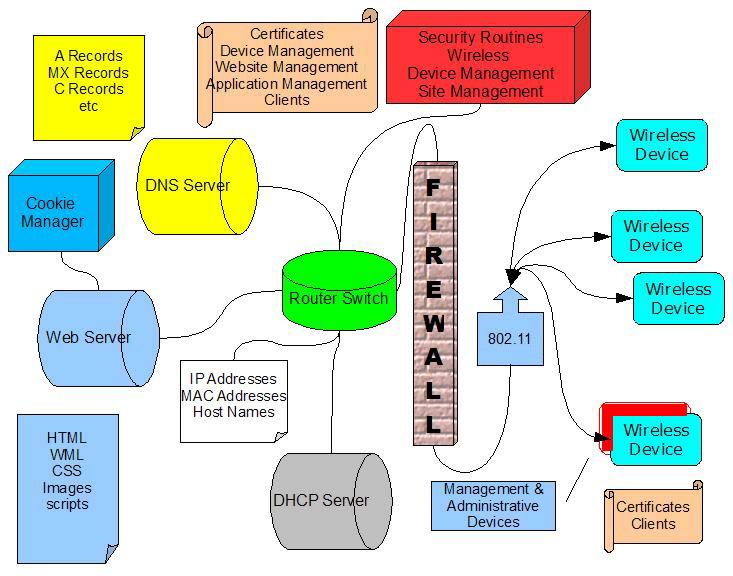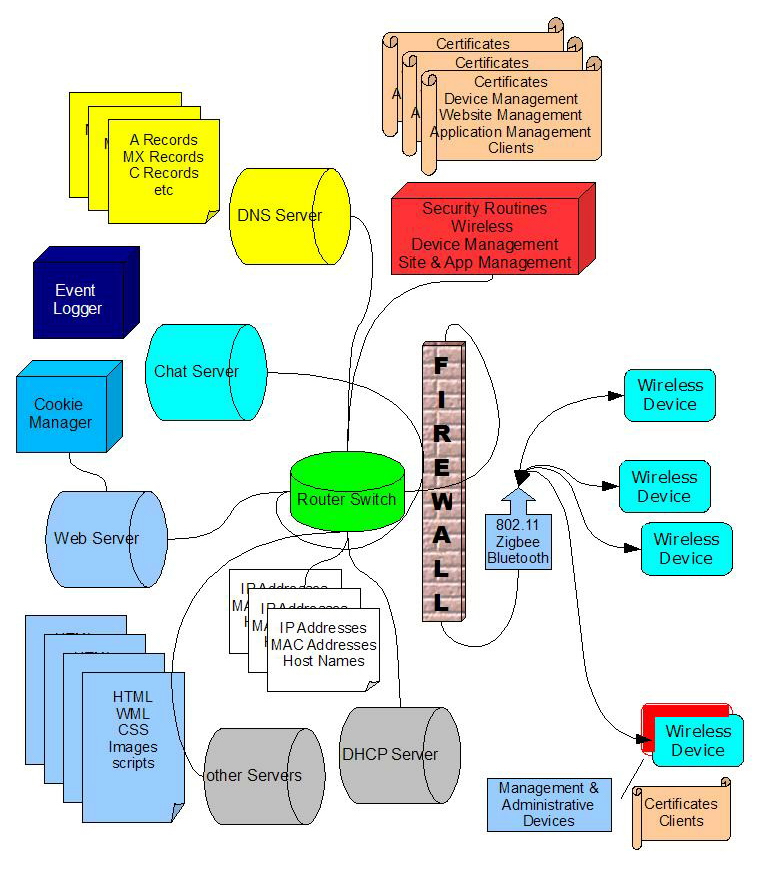Provides all Internet functions in a single box, but stands alone!

Provides all Internet functions in a single box, but stands alone!

This box is intended to be an 802.11 access point that is NOT connected to the Internet but appears to be. An itinerant user can wander within range and be dished up a webpage or a whole website that is a duplicate of a real website.
Inside the box is the equivalent of a wireless access point (Wi-Fi) plus a local internal web server plus associated DNS and a DHCP server. The owner can copy web pages into the server, including graphics, and then set the pseudo-DNS to point to the real website address (but that is in the server).

The access point functions normally to hand out dynamic (DHCP) addresses from the 192.168.x.x range, and the web server includes functioning cookie-dispensing.
Real-life uses include isolated Wi-Fi servers at a real estate property, disconnected servers at a department store, information-vending booths, and so on that really don't need the Internet. The cookies allow a webmaster to collect data about which kiosk the user went to before coming to the real one on-line.
Cities can deploy these boxes at strategic locations, like street corners, inside convention centers, and even on buses, to provide information to citizens and visitors that doesn't change often, such as locale-specific maps and schedules.
A user who views a listed real estate property would be able to see additional choices when connected to the real website, such as make an appointment to view it or even make an offer. Similarly, location-specific cookies can help businesses identify opportunities for services.
If the isolated kiosk is also programmed with a chat server, employees within range of the kiosk can provide answers to questions in real time, a real bonus in a large warehouse store.
A more general diagram is shown here to illustrate chat and other possible features to be built in.

Notice that other types of radio besides 802.11 (Wi-Fi) are possible, such as Bluetooth for cellphones, and Zigbee, but these are optional, just like cookies for tracking and other applications. E-mail functions won't truly work, but for tracking purposes an application that mimics a SMTP server can capture e-mail addresses for offline purposes.
While no Internet connection is required, an Ethernet port can be added to the box to allow direct interface with authorized users. This port could also be used for limited connections to other parts of a LAN.
Multiple websites can be stored on box, such as one for each local business within range. Client access to their own website for management can be provided that precludes other website owners from accessing content not belonging to them.